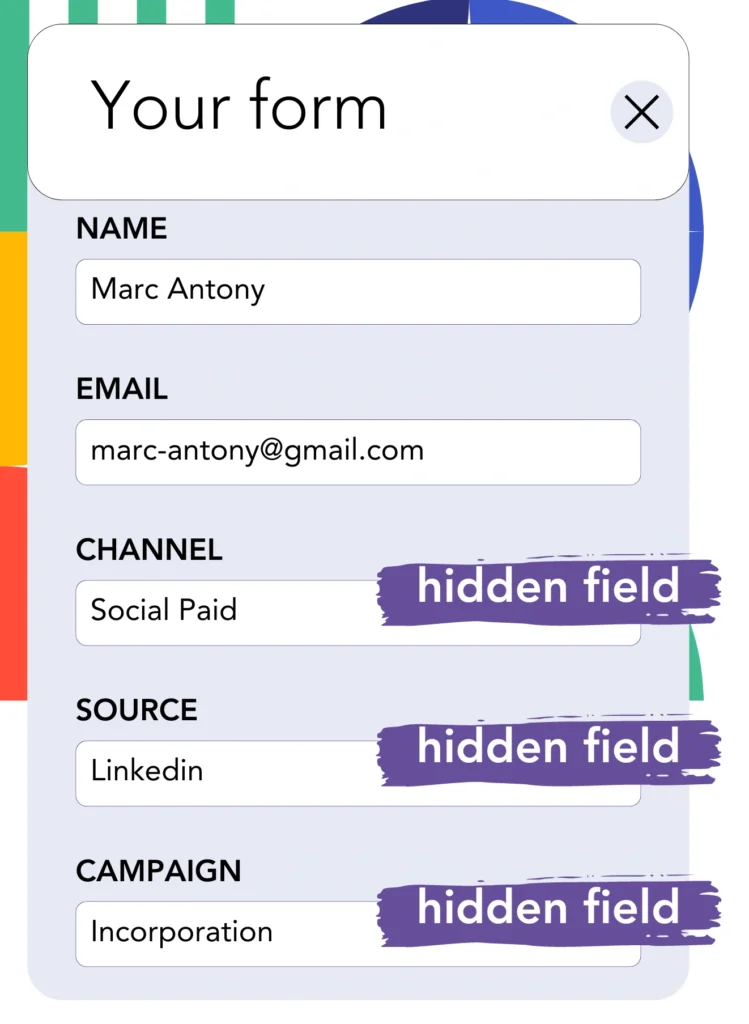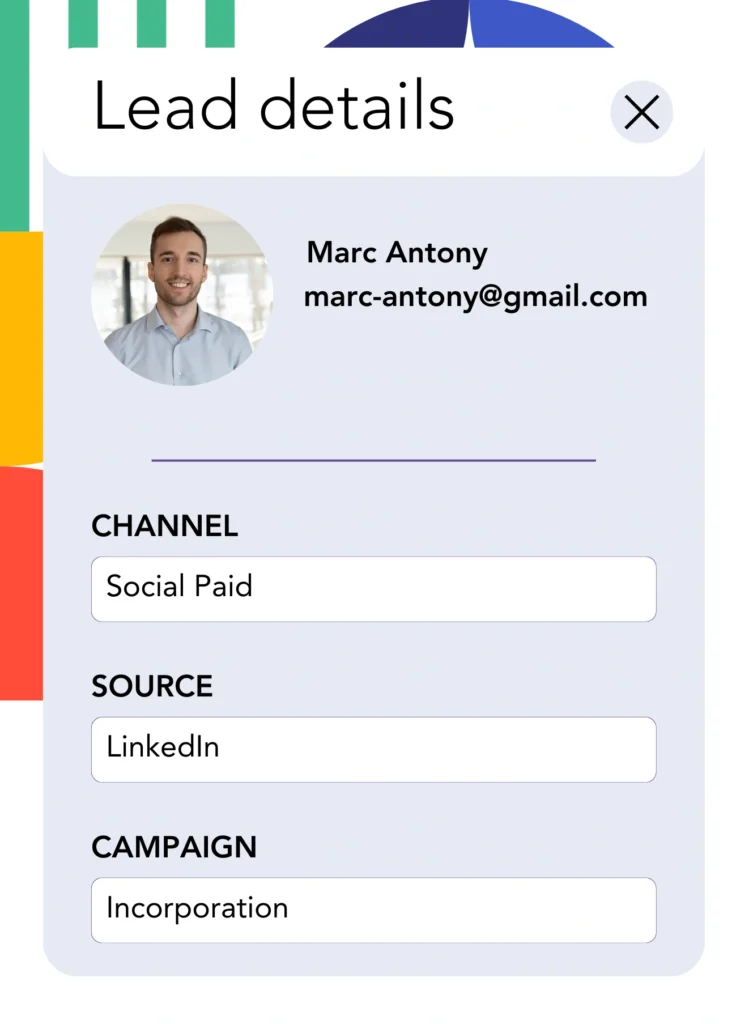Although you leverage LinkedIn ads to drive leads into Freshworks CRM, tracking the exact LinkedIn ad source for each lead remains mysterious.
When a lead is turned into a paid customer, tracking which specific LinkedIn ad influenced this customer is no longer possible.
This tracking gap makes it hard to manage your LinkedIn ads effectively, so you end up investing in numerous ads without being sure which ones contribute to your leads and revenue.
A simple tool could, hopefully, trace each lead back to the specific LinkedIn campaign group, campaign, ad, and audience responsible for its creation.
Let’s dive into it!
How to capture LinkedIn ads in Freshworks CRM
Step 1: Add Leadsources in the head tag of your website

Leadsources provides an efficient way to monitor the source of your leads. After being added to your website, it tracks up to seven lead source attributes for each lead.
Create an account on Leadsources.io – it’s free.
Insert the Leadsources tracking code into the head tag of your website by following this guide.
Step 2: Add the UTM parameters to your LinkedIn ads campaigns

Integrate the UTM parameters that you would like to follow in your LinkedIn ads.
For instance, these UTM parameters can help you monitor the campaign, ad, and audience:
- UTM_source=linkedin
- UTM_campaign=campaign-name
- UTM_term=audience-name
- UTM_content=ad-name
Leadsources compiles all lead source data, including channel, landing page, and landing page subfolder, even without UTM parameters, to ensure detailed tracking for each lead.
Step 3: Add the hidden fields in your form

Incorporate hidden fields in your form—Leadsources will use them to save lead source data for every form submission.
Upon form submission by a new lead, Leadsources will automatically populate the hidden fields with information from your LinkedIn ads.
For specific instructions on how to add hidden fields, please check our guide.
Step 4: Capture the LinkedIn ads data in Freshworks CRM

When users click on your advertisements and land on your site, Leadsources captures LinkedIn ads information, including the campaign, audience, and ad.
Leadsources automatically updates the hidden fields in your form with information from LinkedIn ads.
By connecting your form to Freshworks CRM, you can automatically forward both LinkedIn ads data and your leads upon submission.
How does Leadsources work?
Once implemented on your site, Leadsources gathers LinkedIn ads information each time a visitor arrives at your page.
The LinkedIn ads information is retained in your form’s hidden fields, which are sent to Freshworks CRM alongside the leads details (name, email, etc.) once the form is submitted.
Leadsources gathers the following data for every visitor:
- Channel
- Source
- Campaign
- Content
- Term
- Landing page
- Landing page subfolder
Leadsources is capable of tracking lead source data through the referrer, even when UTM parameters are absent.
In some instances, it is not feasible to use UTM parameters, particularly when traffic originates from organic channels:
- Google Search
- Instagram bio link
- Social media posts
- Etc.
In these circumstances, most lead source tracking tools cannot capture lead sources, as they rely only on UTM parameters for data collection. However, Leadsources is still able to gather some lead source information when UTM parameters cannot be utilized:
- Channel
- Source
- Landing page
- Landing page subfolder
Consequently, Leadsources sets itself apart from numerous other tools by providing detailed lead data tracking across all channels:
- Organic Search
- Paid Search
- Organic Social
- Paid Social
- Referral
- Affiliate
- Display Advertising
- Direct Traffic
Additionally, Leadsources organizes your traffic by channel without manual input, resulting in a tidy dataset.
Ultimately, Leadsources is a robust yet simple tool that consolidates comprehensive lead source data across multiple channels in a single location.
Performance reports: Lead, sales, and revenue by source
Monitoring LinkedIn ads data within Freshworks CRM provides the opportunity to generate multiple performance reports, including:
- Leads, sales, and revenue by channel
- Leads, sales, and revenue by campaign
- Leads, sales, and revenue by ad
- Leads, sales, and revenue by audience
- Leads, sales, and revenue by landing page
- Leads, sales, and revenue by landing page subfolder
Therefore, you can adjust your LinkedIn budget based on which channel, campaign, ad, and audience generate your leads, sales, and revenue.
Let’s highlight the various reports you are able to produce.
1. Lead source reports
These reports demonstrate the count of leads generated via:
- Channel
- Campaign
- Ad
- Audience
- Landing page
- Landing page subfolder
Example #1:
Begin by exploring the “Leads by Channel” report to find the channel that generates the largest number of leads.

Example #2:
By identifying the channel that yields the best results, such as LinkedIn, you can concentrate on evaluating leads from each campaign run on LinkedIn.

Example #3:
Once you find the LinkedIn campaign that yields the greatest number of leads, you can explore which exact audience or ad is influencing these leads.

2. Sales and revenue source reports
While it is helpful to identify the LinkedIn ads that produce the most leads, we should question their role in influencing our revenue.
Integrate your leads into a CRM like Freshworks CRM to identify which ones transformed into paying customers, allowing you to track sales and revenue from different channels, sources, landing pages, and more.
You can then reshape your marketing strategy to prioritize the channels, sources, campaigns, audiences, and ads that drive financial returns.
To make this clear, let’s consider the situation outlined below:
| Channels | Search Paid | Social Paid |
| Leads | 50 | 75 |
| Sales | 5 | 6 |
| Average order value | $150 | $100 |
| Revenue | $750 | $600 |
Following the launch of ads on Google and LinkedIn, the early “Leads by Channel” report showed that LinkedIn’s Social Paid ads resulted in more leads than Search Paid ads.
After reviewing your sales and revenue data from your CRM export, you found that the Search Paid channel produced more revenue with fewer leads than the Social Paid channel, leading you to allocate additional funds to Search Paid.
Additionally, you can produce a diverse selection of other sales and revenue reports:
- Sales and revenue by source
- Sales and revenue by campaign
- Sales and revenue by content (aka. ad)
- Sales and revenue by term (aka. audience)
- Sales and revenue by landing page
- Sales and revenue by landing page subfolder
LeadSources tracks the source of each lead in Freshworks CRM, whether they come from ads, organic search, social, email, etc. and syncs that data with each submission. See the full breakdown on the lead source in Freshworks CRM page.

